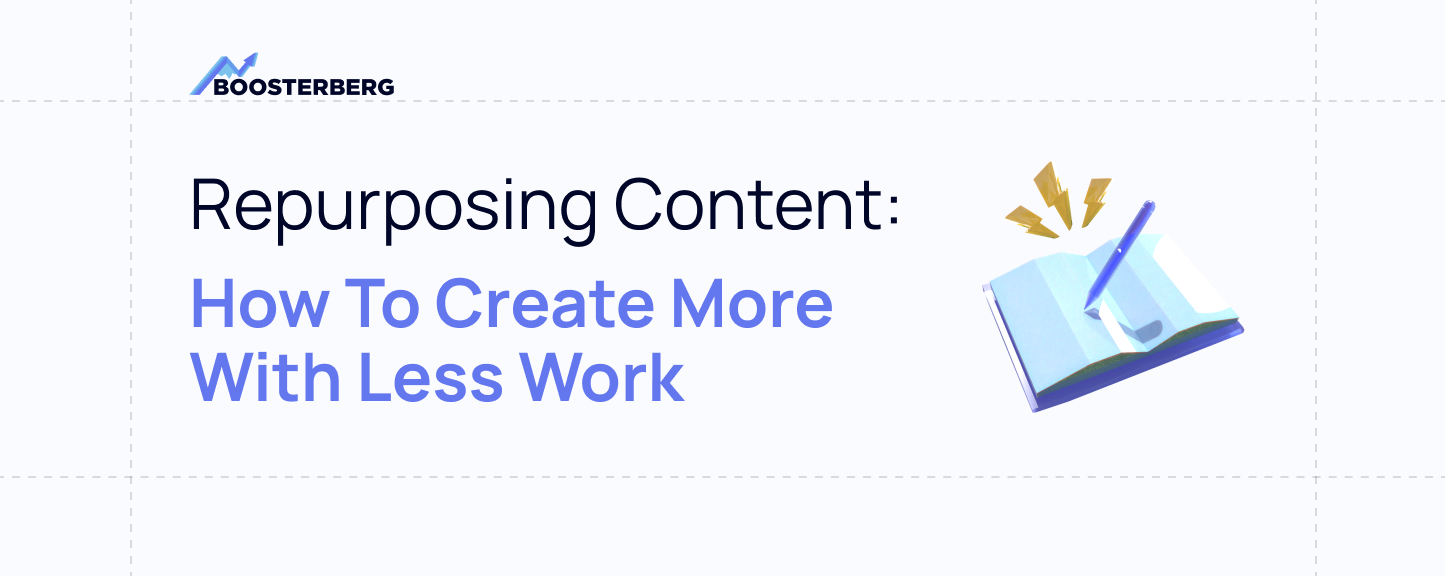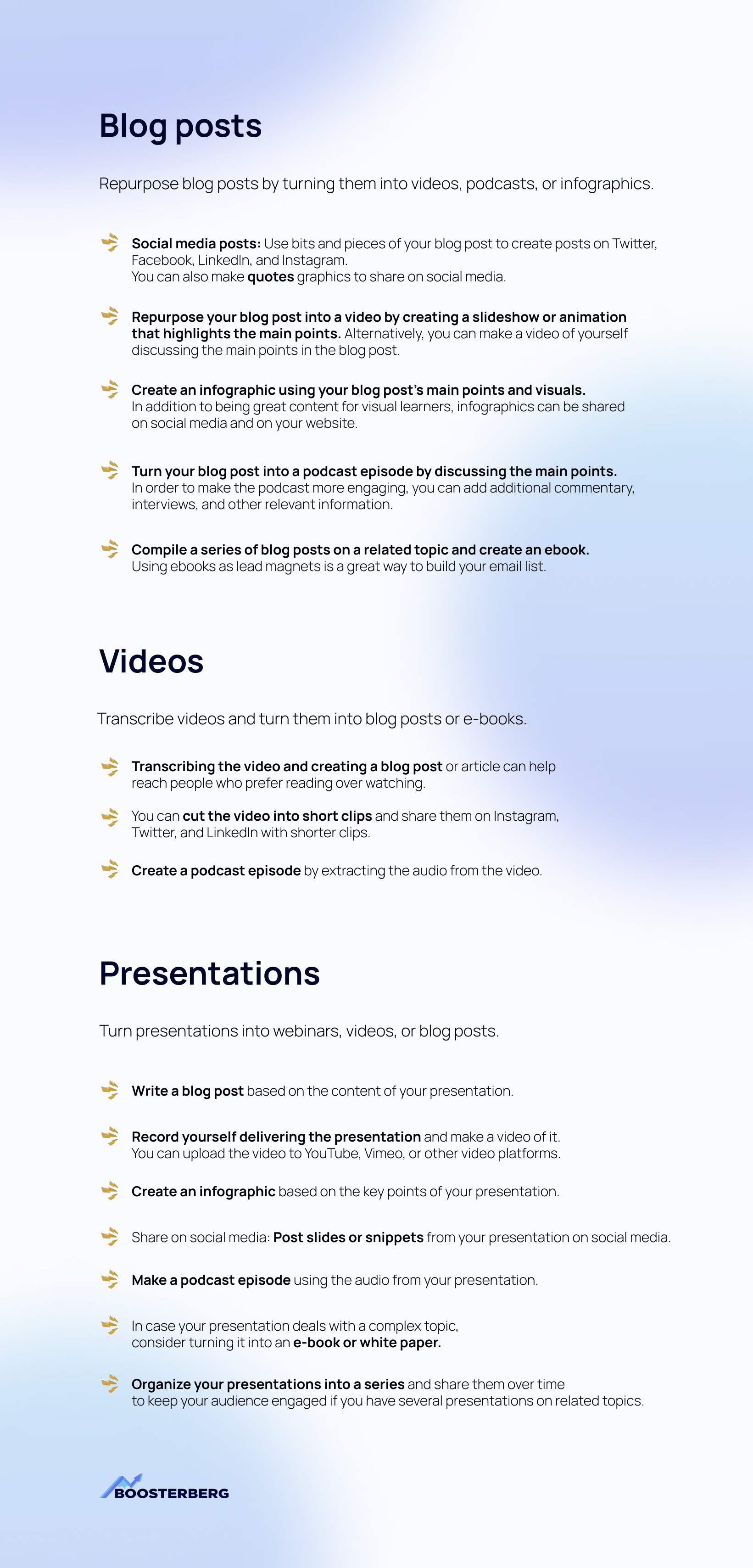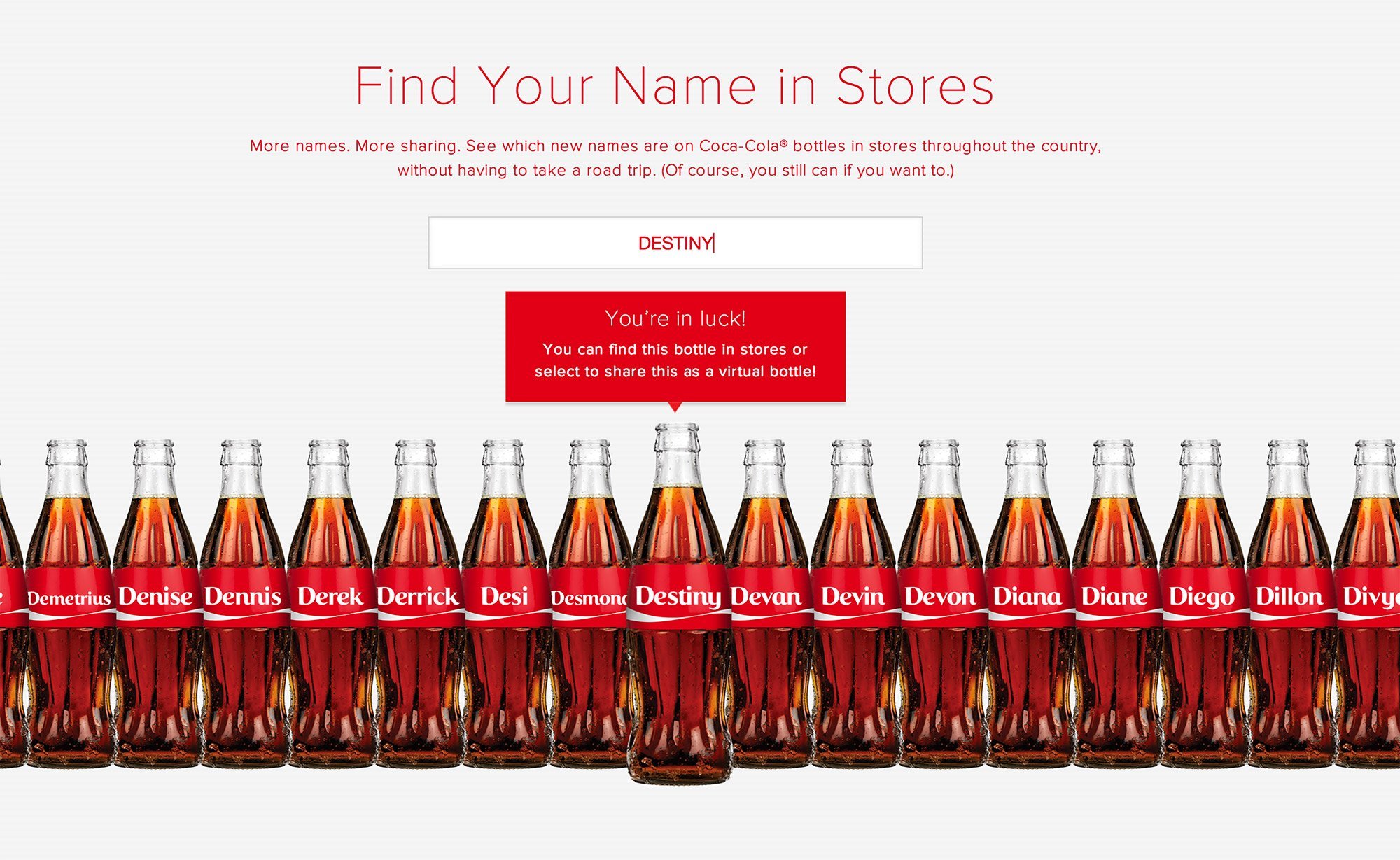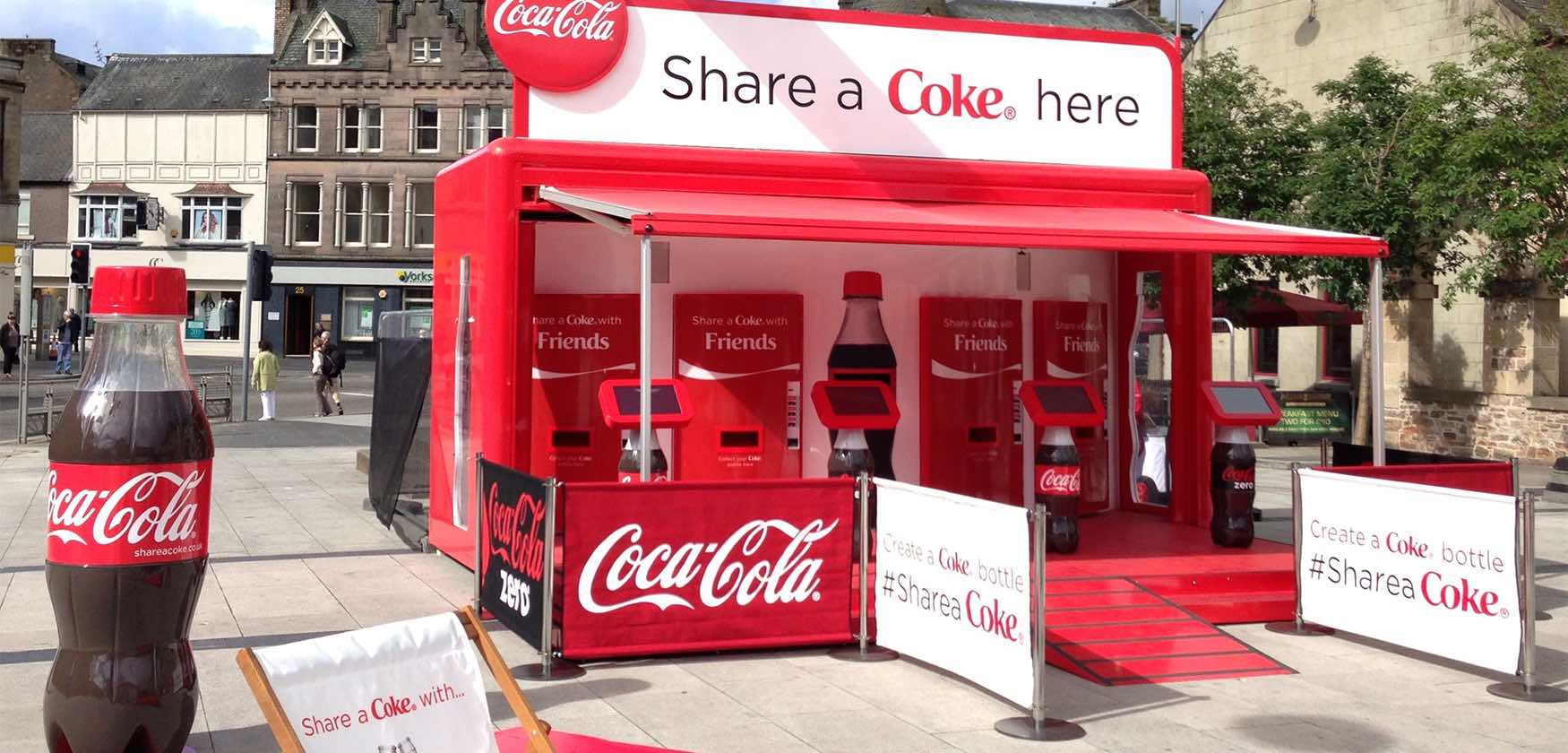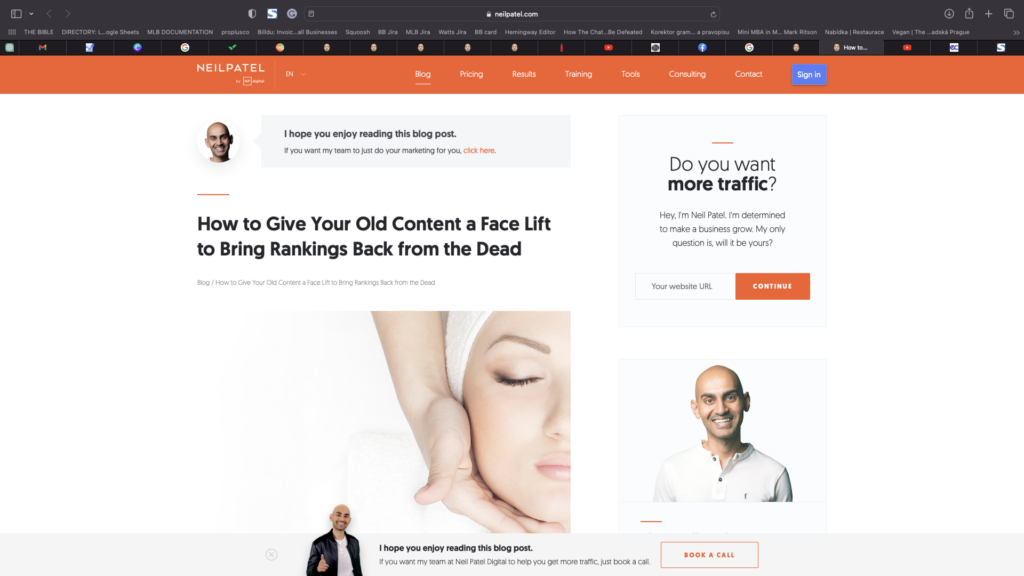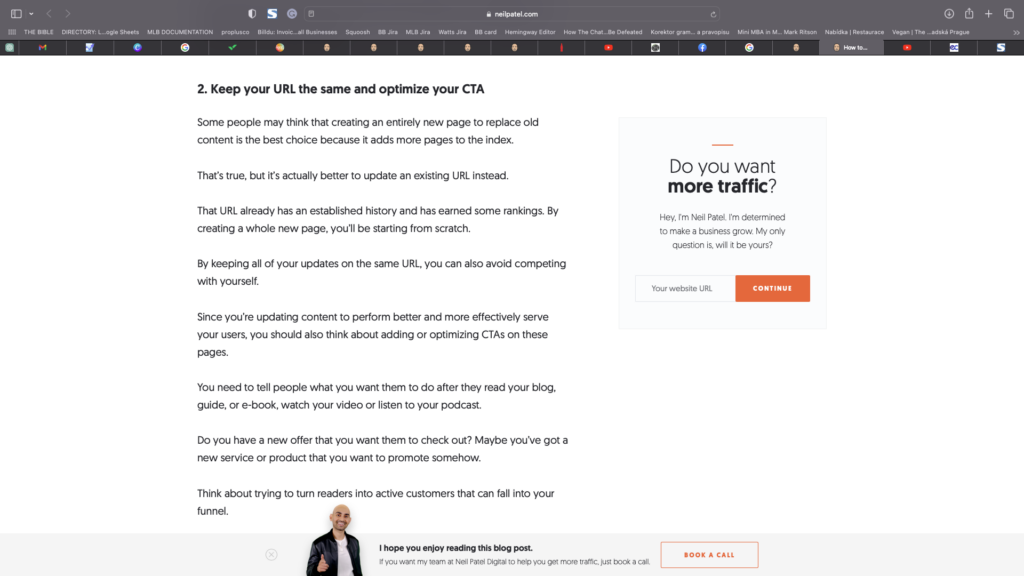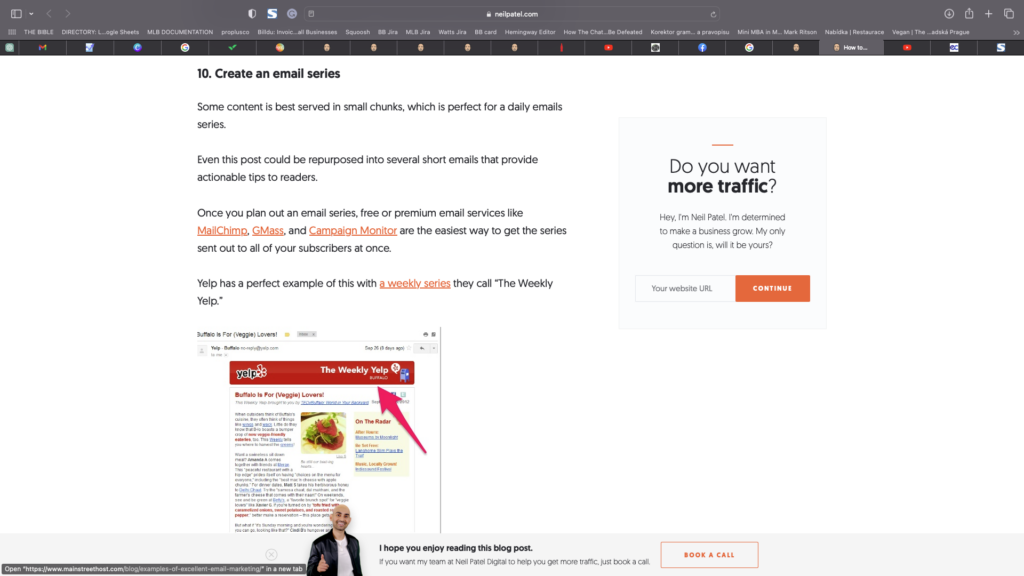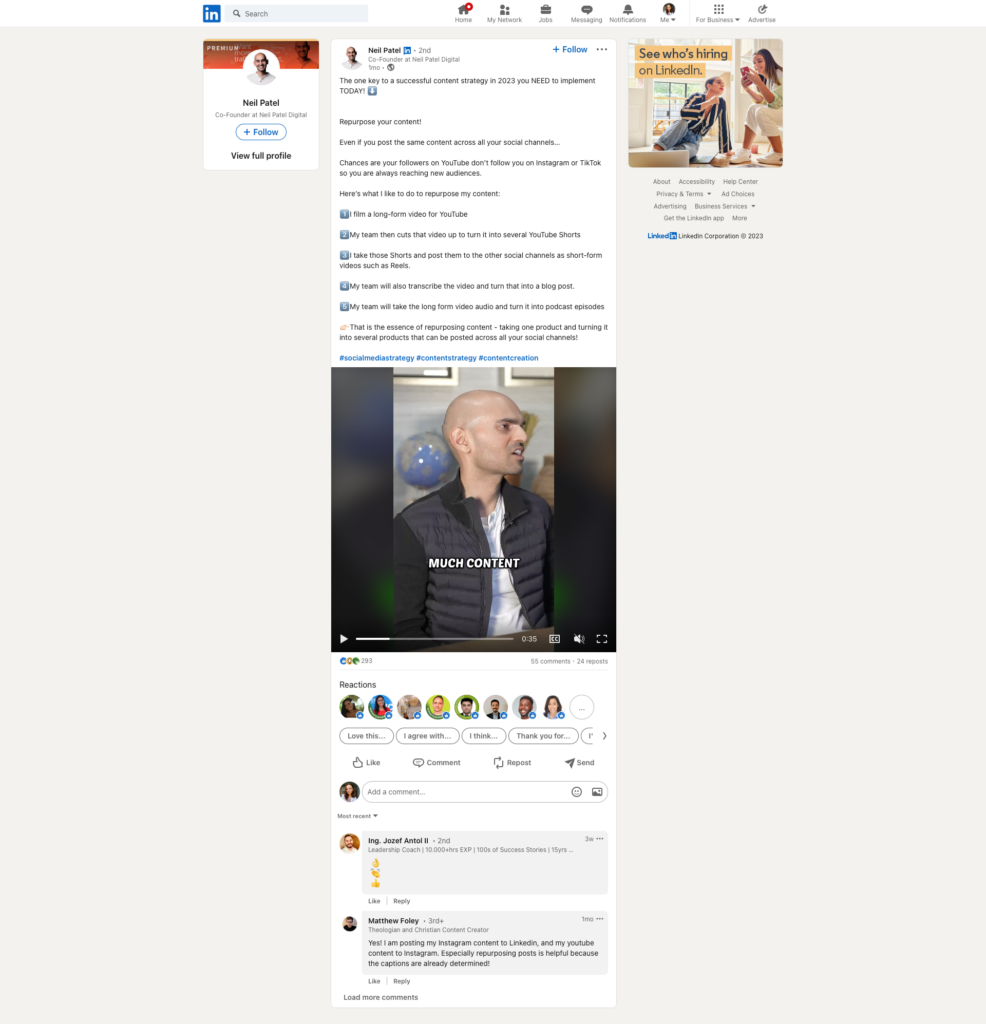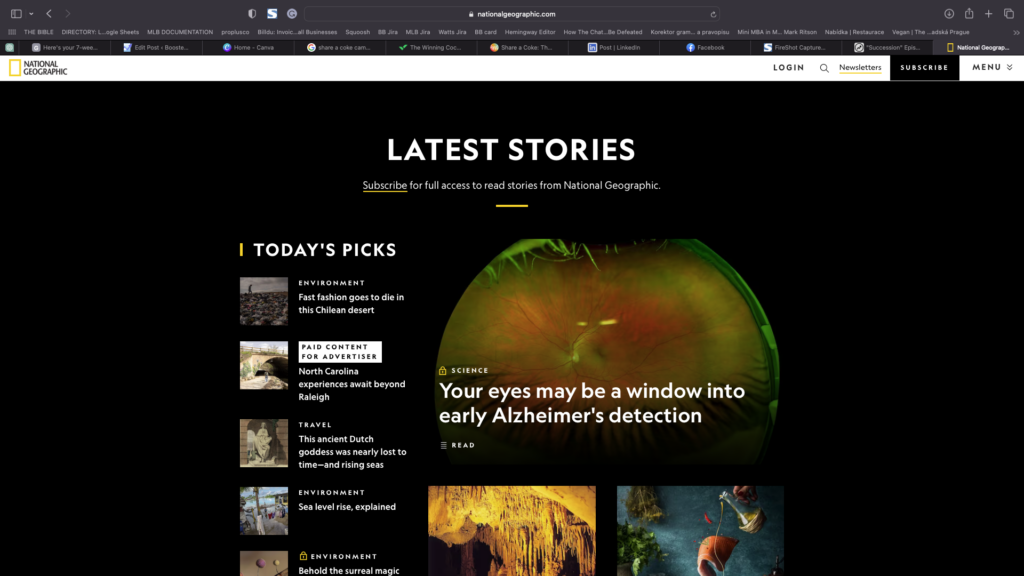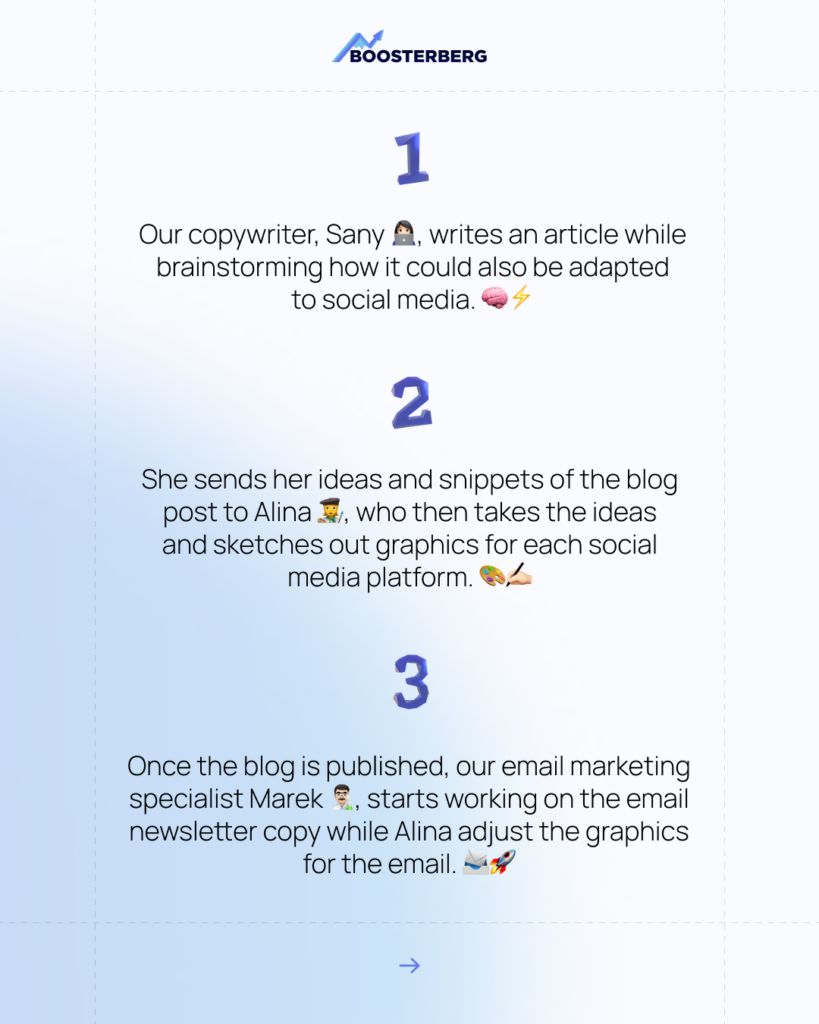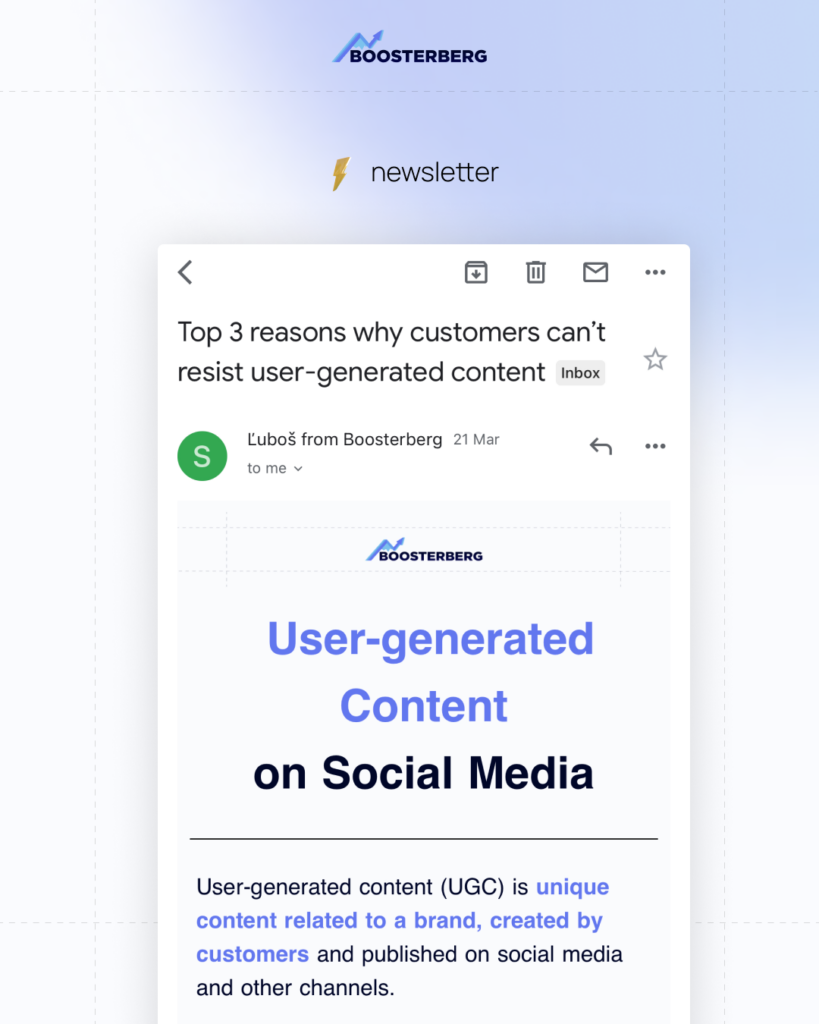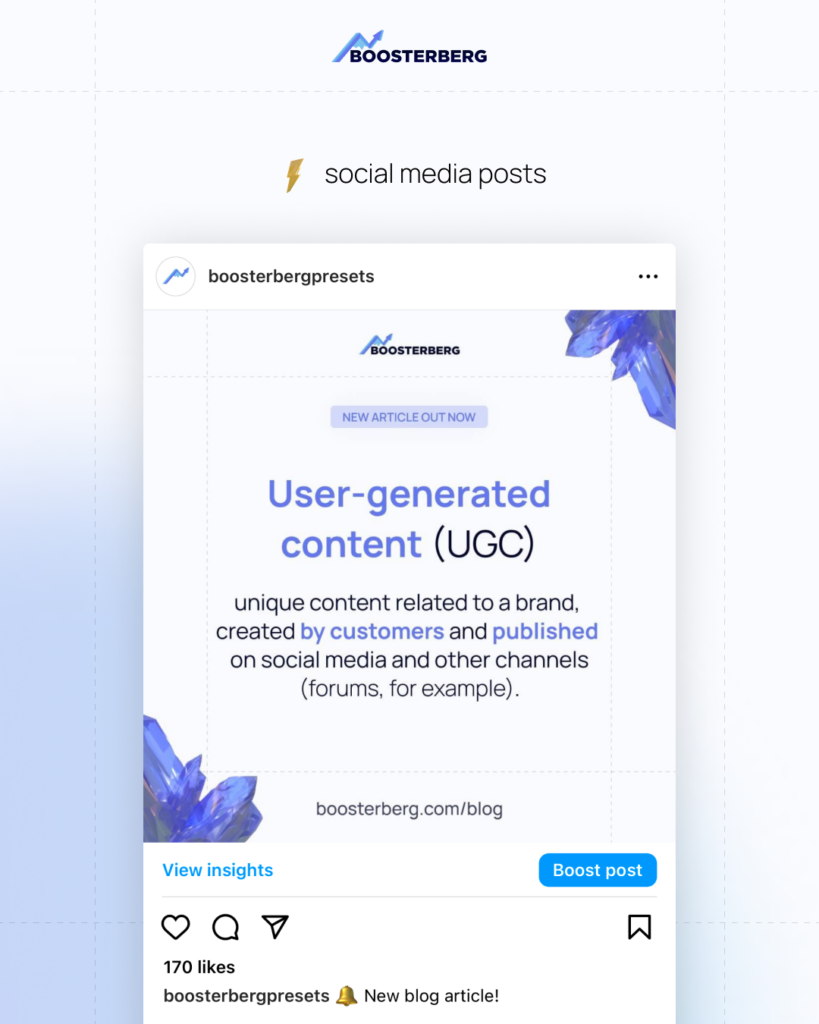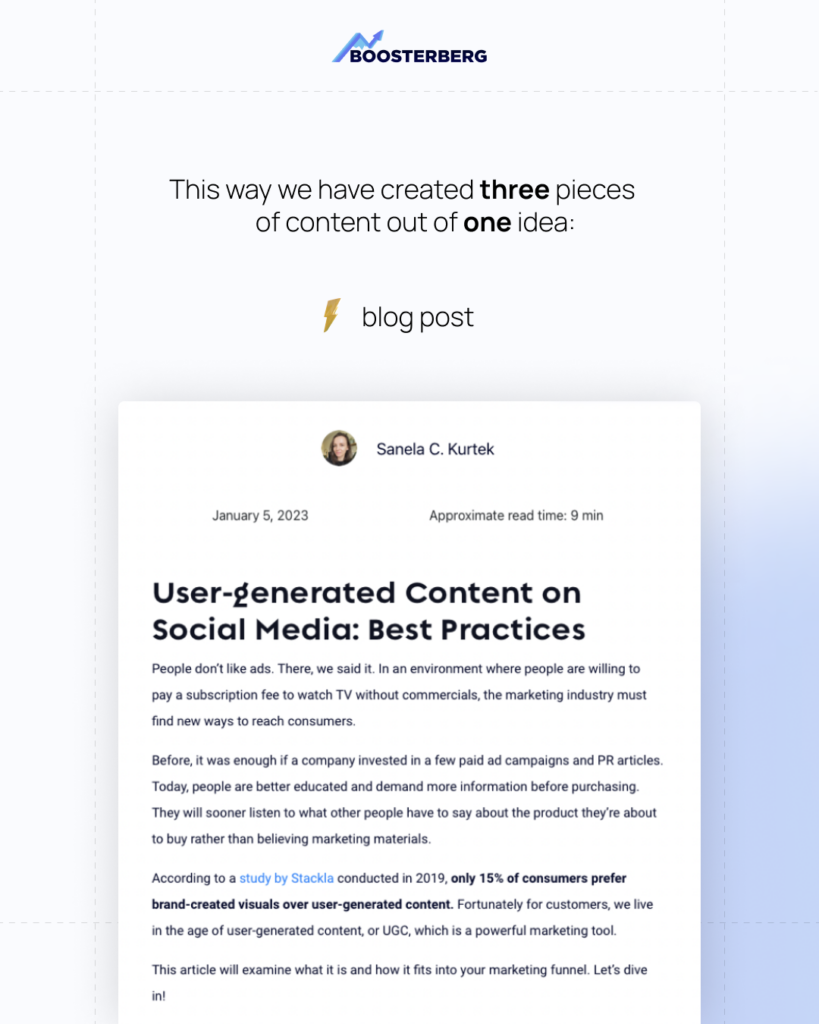Creating fresh and unique content on a regular basis can be time-consuming and challenging. And while there is no shortcut to producing high-quality content, there are ways to produce more of it while saving time and money. Have you ever tried repurposing content?
A valuable, well-thought-out piece of content is a necessity in today’s digital age. Both businesses and individuals strive to create top-notch content that engages their target audiences and drives traffic to their websites and social media platforms. By repurposing existing content, you can save time, reach more people, and create an effective content strategy.
This article shows you how repurposing can improve your content marketing efforts.
What does it mean to repurpose content
Repurposing content means repackaging it in a different format or for a different platform. By using the same information or ideas but in a different way, you can appeal to a different audience or achieve a different marketing goal.
You can repurpose various types of content. Here are some examples:
Blog posts
Repurpose blog posts by turning them into social media posts, videos, podcasts, or infographics.
- Social media posts: Use bits and pieces of your blog post to create posts on Twitter, Facebook, LinkedIn, and Instagram. You can also make quote graphics to share on social media.
- Repurpose your blog post into a video by creating a slideshow or animation highlighting the main points. Alternatively, you can make a video of yourself discussing the main points in the blog post.
- Create an infographic using your blog post’s main points and visuals. Visual learners tend to process information better when it is presented in a visual format, making infographics an effective tool for engaging with this part of your audience.
- Turn your blog post into a podcast episode by discussing the main points. Then, to make the podcast more engaging, you can add additional commentary, interviews, and other relevant information.
- Compile a series of blog posts on a related topic and create an e-book. Using e-books as lead magnets is a great way to build your email list.
Videos
Transcribe videos and turn them into blog posts or e-books.
- Transcribing the video and creating a blog post or article can help reach people who prefer reading over watching.
- You can cut the video into short clips and share them on Instagram, Twitter, and LinkedIn with shorter clips.
- Create a podcast episode by extracting the audio from the video.
Presentations
Turn presentations into webinars, videos, or blog posts.
- Write a blog post based on the content of your presentation.
- Record yourself delivering the presentation and make a video of it. Then, you can upload the video to YouTube, Vimeo, or other video platforms.
- Create an infographic based on the key points of your presentation.
- Share on social media: Post slides or snippets from your presentation on social media.
- Make a podcast episode using the audio from your presentation.
- If your presentation deals with a complex topic, consider turning it into an e-book or white paper.
- Organize your presentations into a series and share them over time to keep your audience engaged if you have several presentations on related topics.
The benefits of repurposing content for different channels
Content repurposing has several advantages for businesses and individuals alike. Let’s go through them.
💸 Time and resource savings
When repurposing content, you can maximize your time and resources in creating it. Instead of starting from scratch, repurpose existing content to fit different formats and platforms.
🗣️ Engagement and reach increase
Using repurposed content will help you reach a greater audience and increase engagement. As different audiences prefer different formats, repurposing content into different formats can help you engage more people and reach wider audiences.
🔎 Optimizing search engine results
Repurposing content will also increase your SEO (search engine optimization) results. The more content you create that is related to the same topic or keyword, the more likely your website will appear in search results.
👑 Establishing authority
Content repurposing can help establish you or your brand as an authority in your field. Creating valuable content in different formats lets you demonstrate your expertise and gain your audience’s trust.
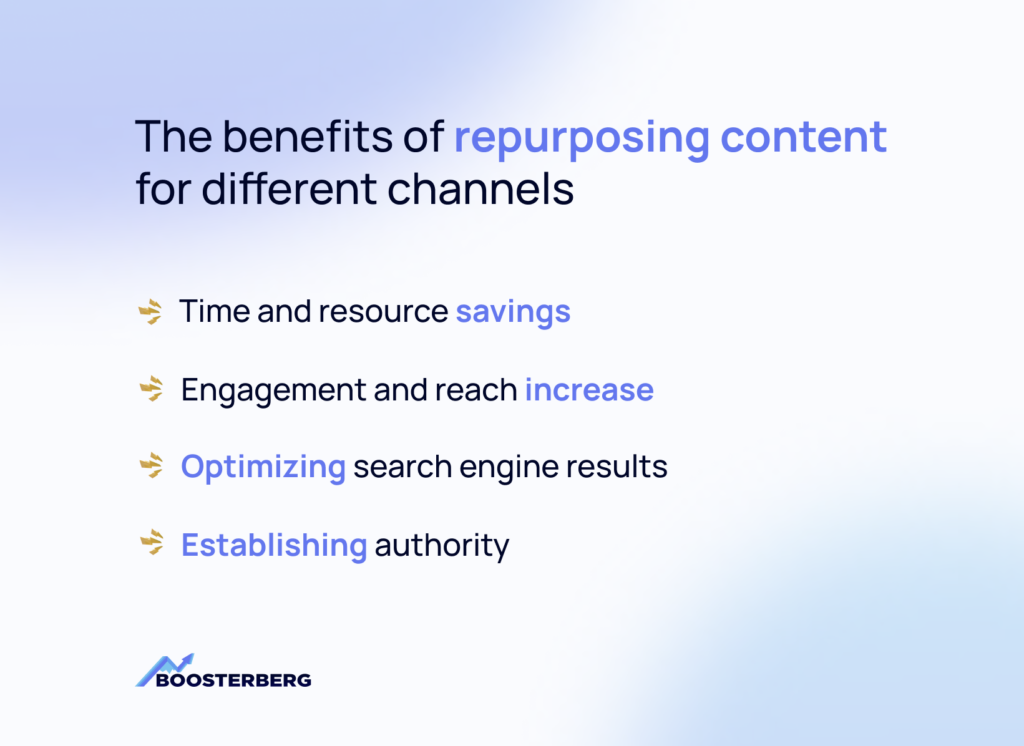
How to repurpose content
Using repurposed content to extend your content’s lifespan and reach can be a powerful strategy. Repurposing content can help you reach a wider audience and keep your content top of mind. It also allows you to create more engaging and relevant content for your audience. Additionally, you can use repurposed content to create evergreen content that does not become dated over time.
So how do you go about it?
First, you need to choose which content is suitable for repurposing.
Of course, not all of your content will be suitable, and there are a couple of factors that you need to consider. When you’re trying to pick the right content, search for pieces that have performed well in terms of traffic and engagement or content that has the potential to be repurposed.
At the beginning of the article, we already mentioned that videos could be easily turned into podcasts or blog posts for people who prefer listening and reading over watching. So that’s one example of content that is suitable to be repackaged.
Once you’ve chosen your content, decide the purpose of repurposing.
What will be the goal of this repackaged content? Are you trying to generate more leads, improve your search engine rankings or reach a wider audience?
With this goal in mind, you can move on to choosing the format and platform for your content.
A good example is taking a longer video that you might have posted on your web or Youtube and creating smaller videos for social media, such as Instagram or TikTok, where people look for shorter, engaging videos.
Now that you have decided on the format and platform, you will need to adjust your content.
This involves more than just copying and pasting. Every channel and platform is different and has its own set of rules. For example, if you’re turning a blog post into a podcast, you will have to adjust the tone and style of it to more of a conversational style because listening is different than reading. When you listen, you have limited time to process the information you’ve heard, compared to reading.
When you’re finished with the repurposing part of the process, it’s time to move on to promotion.
Post your content across your chosen channels and platforms to maximize its impact.
Content repurposing success stories
The most effective way to understand how to repurpose content effectively is by looking at examples of how other successful brands do it.
Coca-Cola
The iconic “Share a Coke” campaign from Coca-Cola has been repurposed in different ways over the years. They personalized bottles with names and phrases, launched social media challenges and even made a TV commercial.
Neil Patel
Marketer and entrepreneur Neil Patel often repurpose his content into different formats. For example, he turns blog posts on SEO into videos and podcast episodes. Also, he published an e-book and produced an infographic based on a blog post.
The National Geographic
The National Geographic website offers a wide range of visual content, including photos and videos. They repurpose this content into various forms, including social media posts, articles, podcasts, and TV shows. Their YouTube channel also features behind-the-scenes videos and other content related to their shows and documentaries.
Repurposing content to reach a wider audience and achieve marketing goals is an effective way for businesses and individuals to reach their marketing targets. In addition, you can make your content more accessible and engaging by adapting it to different formats and platforms.
How Boosterberg repurposes content?
It usually goes like this, but sometimes the process changes.
- Sany, the copywriter, writes a blog post. She pauses every so often to think about how she can make the content work for social media. She jots down a few ideas and sends them to Alina, the graphic designer.
- Alina sits at her desk, sifting through the snippets and blog post that Sany has sent her. She sketches out a few ideas for graphics and starts to design them on her computer. She knows that the visuals need to be adjusted for different social media channels, so she creates several versions of each graphic.
- Meanwhile, Sany has finished the blog post and has sent it over to Marek, the email marketing specialist. Marek reads through the post and begins to work on the copy for the newsletter.
- As Marek puts the finishing touches on the email copy, Alina makes a few last-minute tweaks to the graphics, making sure that they look perfect in the context of the email.
Overall, the team has taken one piece of content – a blog post – and turned it into several pieces of content that can be used on social media and email marketing.
If you decide to repurpose, there are a couple of things you need to keep in mind:
- Don’t even start with the repurposing until you’ve defined who you are talking to. Think of your target audience.
- Don’t be afraid to experiment with different formats and platforms.
- Avoid duplicating content across different channels; always make sure to adjust it.
- Make sure that your content stays true to your brand.
Repurposing your content can increase the impact of your message and reach a broader audience. Creating new content from existing content can provide fresh value to your audience, make the most of your resources, and improve your content strategy. Whatever you do, whether you’re repurposing old articles, making presentations into podcasts, or creating social media updates based on research reports, the possibilities are endless.
Just remember to have fun with it. After all, content repurposing should feel like a creative outlet and not a chore.
